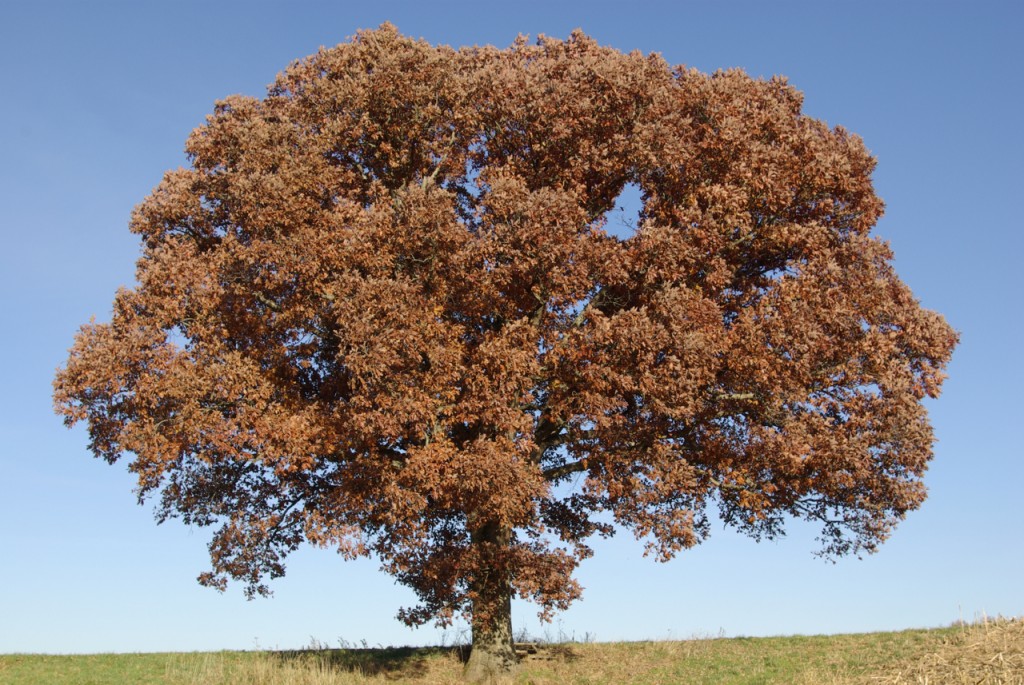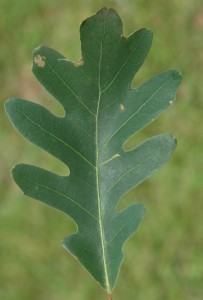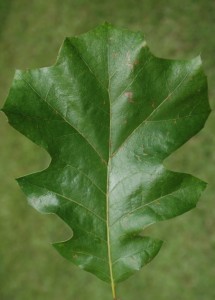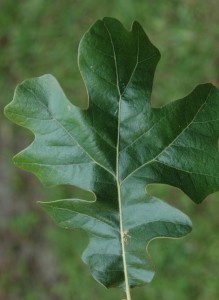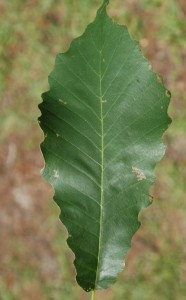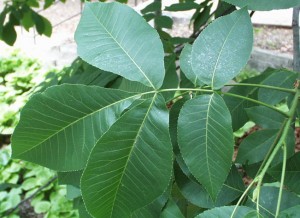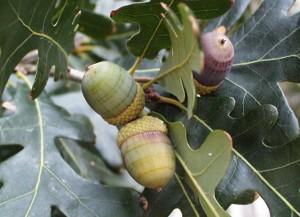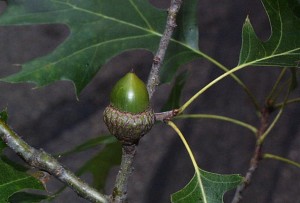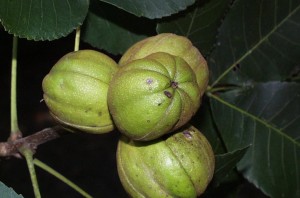Trees and the Structure of Life…The Overstory
Trees and mankind make history together. Both bring definition to a place, adding an unmistakable presence.
In the early 1600s, in pre-European settlement times, 70% of the United States east of the Mississippi River was forested. Its been said that an Eastern Gray Squirrel could have departed the Jersey Shore and arrived at the Mississippi River without ever touching the ground. But by 1907, owing to population and agricultural expansion, only 40% of the land mass remained forested. That number has remained surprisingly stable, with larger forest tracts still comprising 40% of the landscape of the eastern U.S.
Our bluff lands corridor is one of those large forest tracts and is one of the largest contiguous woodlands in Illinois. Paralleling overall national trends, our bluffs have had about 30% of the timberland transformed by agriculture and residential development.
No two forests are the same. Each is defined by its dominant species of trees. Much of the Midwest’s wooded uplands are categorized as oak-hickory dominant canopy forests. Our wooded bluff lands are just such a forest. But, along with the 50 or so different species of trees in our woods, the distinctive kinds of oaks and hickories growing here create a unique, one-of-a-kind defining character.
Oaks have stature and standing among trees in American culture; they are the royalty among trees; they symbolize the American forest. There are over 600 oak species in the large genus called Quercus, which has a geographic distribution throughout the Northern Hemisphere. Most are large trees; the majority are deciduous although some are semi- or fully evergreen; each tree produces both male and female flowers and distinct seed nuts — acorns — enclosed in top caps. Oaks generally are divided into two large groups with numerous species in each group: the white oaks and the red (or black) oaks. Red oak leaves bear tiny bristle tips at the end of each leaf lobe and, since the acorns of red oaks require two years to mature, both “baby acorns” and the larger, fully mature acorns appear on red oak trees in late summer. Red oak acorns generally are yellow in color and are bitter and — for people — are inedible. White oaks lack bristle tips on their leaves and some produce nuts that are sweet, and, for a few cultures, white oak acorns have been a primary food source. Within the large white oak group, a further subdivision — the Chestnut Oaks — are distinguished by their wavy-edged or toothed leaves, still without bristle tips, but inedible acorns.
Oaks and we have moved through history together and, together, have built America. Prized for their beauty, durability, strength, resistance, and high fuel energy value, oaks provided one-half of the hardwood that built our nation. If oaks are forests’ royalty, then the Eastern White Oak surely is the king. And, the Eastern White Oak is the principle oak of our bluff lands’ forests.
White Oak is important to us economically and ecologically. No other tree provides better hardwood for all-around uses: white pine warps less; hickory is more resilient; ironwood is stronger; and, locust is more durable. But White Oak can do all these things at the same time and so is, board-foot-for-foot, more productive.
A mature White Oak is majestic and regal, standing up to 100 feet tall, with a broad spreading crown and horizontal limbs to 50 feet in length. Although it is hard to imagine, barely half of the tree is actually visible. Underground is a mirror image of gigantic growth with a deep tap root and innumerable long horizontal roots that scramble through the earth even farther away from the trunk than the widest limb spread above the ground.
White Oak trees can live an extremely long time, and, while the average life span is 150 to 300 years, far older specimens are known. A few original “Liberty Trees” — already old and very large trees selected for their singular stature by early settlers as gathering places for American Revolutionary War patriots — still stand. Several of these truly venerable trees are estimated at 700 years of age, and, like the Wye Oak of Maryland which was tumbled down by high winds in 2002, are accorded obituaries when they finally succumb and die. In our state, the champion White Oak lives in Hamilton County and is 80 feet tall with a nearly 21-foot circumference.
Black Oak is the second most prevalent tree species in our bluffs’ forests. Although often
quite tall, Black Oak trees lack the graceful beauty and spread of White Oaks. They can be gangly in appearance, often crooked and knotty, unkempt and rough, with a narrow crown at the top of the soaring trunk. Union County hosts our state champion Black Oak at 111 feet tall and a 20 foot circumference. In our bluffs, large stands of Black Oaks grow on the mid-slopes and in ravines.
Our driest ridge tops are home to Post Oaks. Although the wood is ungainly and knotty, Post Oak is both heavier and harder than White Oak. Named for its most common use, Post Oaks have been turned into many a pasture enclosure. Massac County, along the Ohio River, is
home to Illinois’ state champion at 95 feet tall and a 14.5 foot circumference.
The heaviest and hardest of the predominant oaks in our woods is Chinquapin, also called Yellow Chestnut Oak. A lover of limestone, it is found on the rockiest hillsides and often marks the location of limestone glades. Union County again has the honor of being home to our state champion Chinquapin Oak, with a specimen tree that is 120 feet tall and a circumference of over 19 feet.
The other signature trees within our forests are hickories, members of the genus Carya, a smaller group of about 25 species with a geographic range in East Asia and North America. Hickories are divided into three main groups: the pecans, a bottomlands-growing tree, widely cultivated for its delicious nuts; the shagbarks, with peeling bark on mature trees which produce thick-hulled nuts; and, the pignuts, which produce nuts with thin husks. Hickories often provide a late and very tall glow to our bluff woods as the bright-gold leaves shine in autumn’s sun from trees that seem suddenly to tower over a nearly leafless forest.
Shagbark Hickory is the most prevalent hickory growing in association with the oaks in
our forests. It is easily recognized, with great peels of bark along the tree trunk in long, thick, warping strips. Next to locust trees, shagbark has the highest fuel value, with one cord of shagbark wood capable of releasing the same amount of heat (or BTUs, British Thermal Units) as one ton of anthracite coal. Under the very thick husk shaped like an egg, the true nut of shagbark is sweet and quite edible. Shagbarks grow in shaded woods and while the nuts sprout readily, the majority only take root and thus regenerate the forest, only within an already maturing woodland. Yet again, Union County provides home to our state champion shagbark at 105 feet tall and 12.5 foot circumference.
Black Hickory is the final defining tree in our unique forest composition. Much shorter than shagbark , Black Hickory grows only 30 to 40 feet in height and has a scraggly, gaunt and starved, almost poverty-stricken appearance. Black Hickory trees grow in some of the least hospitable areas, with few resources available: the dry ridges and exposed ledges of our bluff woodlands. Along with Chinquapin Oaks, Black Hickory trees clearly mark the locations of and are the primary trees within limestone glades. These two, and Post Oak, are able to flourish and successfully reproduce and regenerate in harsh conditions: the driest, hottest, and most thin-soiled areas of our bluffscape.
Unlike the flat till prairies of eastern Monroe and Randolph Counties and much of Illinois, our bluff lands rise and fall in steep undulations which mean that slope, direction, and soil depth and type all mediate the amount of sunlight received and moisture retained and so determine the limits of what can grow where. A south-facing, thin-soiled ridge with limestone close to and on the surface provides the sort of environment that only hardscrabble species, such as Post Oak and Black Hickory, can flourish and reproduce within. But, in time, the trees themselves alter their landscape: shading the earth, and spreading roots which help hold erosive soils, and annually shedding leaves which build both soil fertility and its ability to retain moisture. Leaf decomposition alone can alter the acid-alkali (ph) balance of the soil, as oak leaves are acidic and help to slowly break down and reduce the exposed limestone. In the natural landscape, the limits of the possible are tested and retested and sometimes transformed, as, for example, in years of above average rainfall acorns from White Oak can and do take root in the thin dry soils of south-facing slopes. But in the long term, whether or not this species can grow to maturity, reproduce and by itself begin to transform the landscape, depends on the vagaries of weather, climate and mankind.
Taken together, our oaks: White, Black, Post and Chinquapin, and our Shagbark and Black Hickories bring a definitive character, a unique calculus, to our bluff lands corridor. They also create and are the means to make our forests a uniquely productive wildlife corridor.
Hard mast — the usually prodigious and long-lasting supply of oak acorns and hickory nuts found in our woods —
provides fall and winter food for 90 species of wildlife, including many mammals and birds. In particular, our deer, turkey and quail game populations absolutely depend upon our woodlands’ mast bounty for survival. This year the primary food sources of so many will be more difficult to come by, as the results of April’s unusual cold snap are made apparent in the vastly reduced crop of mast foods.
Fall’s leaf color change is upon us at the end of the month. Our Hickories’ bright golden yellows, Black Oaks’ dull reddish oranges, Chinquapins’ scarlet tones, Post Oaks’ dull yellow-browns, and White Oaks’ lustrous wine-reds will merge their colors into a tapestry of unsurpassed beauty along the bluffs.
Let the colors remind us that we live and work together in these bluffs. We are increasingly the catalyst in the ongoing calculus of the limits of the possible for our forested lands. As John Muir, the legendary proponent for American forests, noted: “We travel the Milky Way together, trees and man.”
Clifftop, a local nonprofit organization, is focused on preserving and protecting area bluff lands.
A version of this article appeared in the October 3 2007 edition of the Monroe County Clarion.
© 2007 all content rights reserved, Clifftop NFP.
Comments are currently closed.

